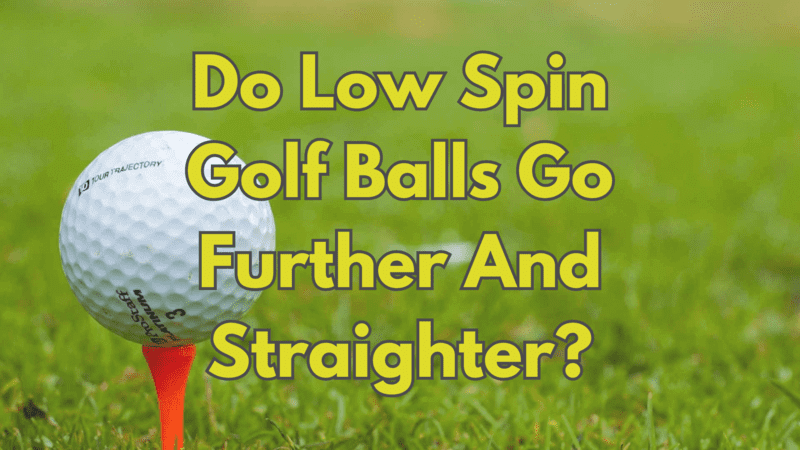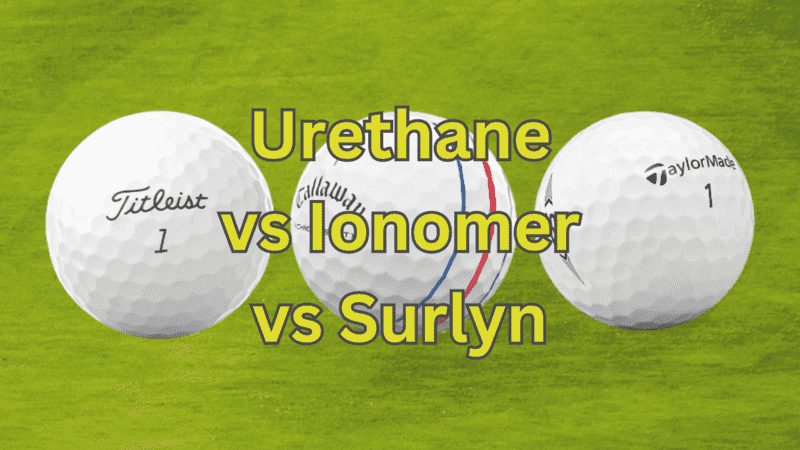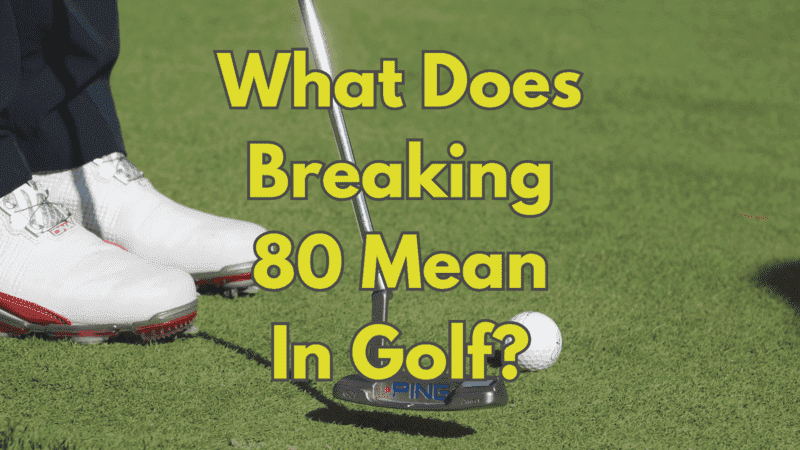Hey there, fellow golf enthusiasts! Grab your clubs and buckle up because we’re about to dive into the captivating world of golf ball spin. Picture this: you’re standing on the tee, the fairway stretches out before you like a verdant carpet, and the distant pin beckons with a challenge. But here’s the million-dollar question that’s been buzzing around the clubhouse – do low spin golf balls hold the key to unlocking unparalleled distance and straighter shots?
Prepare to embark on a journey where we demystify the spin game, separate facts from folklore, and maybe even sprinkle in a touch of golf ball magic. Whether you’re a seasoned pro or a weekend warrior, we’re about to tee off into the exciting realm of low spin golf balls. We’ll discover if they’re the secret sauce to sending your ball soaring down the fairway with precision and panache.
So, grip that driver a little tighter, dust off your golf lingo, and join us as we explore the tantalizing question: Can low spin golf balls truly take your game to new heights. This makes your shots as majestic as a perfectly executed flop shot? Let’s find out together!
What are Low Spin Golf Balls?
Low spin golf balls are a type of golf ball designed to minimize the rate of spin that is generated during a golf shot. Unlike high spin golf balls that prioritize spin for enhanced control and stopping power, low spin golf balls are designed to reduce the amount of spin generated. They have various design features such as a softer cover and a lower spin core. These balls aim to provide golfers with greater distance off the tee.
By reducing spin, low spin golf balls can potentially increase the carry and total distance of a shot. When a shot is hit with a lower spin golf ball, it experiences less impedance from the air, allowing it to travel further. This is particularly beneficial for golfers who struggle with a high spin rate, as it can help them achieve a flatter, more penetrating ball flight.
Additionally, low spin golf balls can be advantageous in windy conditions, as they are less affected by crosswinds and gusts due to their reduced spin. Overall, low spin golf balls offer golfers the potential for increased distance and improved performance off the tee.
How Do Low Spin Golf Balls Affect Distance?
Low spin golf balls can have a significant impact on the distance of your shots. When you hit a low spin ball, it tends to stay in the air longer due to its reduced backspin. This allows the ball to travel farther through the air before it starts descending towards the ground. As a result, you can expect your shots to cover more distance compared to using a regular golf ball.
The reduced backspin of low spin golf balls also helps to minimize the impact of side spin, which can cause the ball to curve off its intended path. With less spin on the ball, your shots are more likely to stay on a straighter trajectory. This results in increased accuracy as well as distance. This can be particularly advantageous when facing challenging fairways or playing on windy days. This is where a low spin golf ball can help you navigate the course with greater control.
The Relationship Between Low Spin Golf Balls and Straight Shots
Low spin golf balls play a crucial role in the relationship between the ball and a golfer’s ability to hit straight shots. When struck with a low spin ball, the sidespin created is minimal. This results in a more predictable and accurate flight path.
This is particularly advantageous for golfers who struggle with a slice or hook, as low spin balls can help mitigate these unwanted ball flights.
As the ball spins less, it also reduces the effect of external factors such as crosswinds. By minimizing the amount of sidespin, low spin golf balls help in maintaining a straighter trajectory even in challenging weather conditions. This allows golfers to have greater control over their shots and greatly improves the chance of hitting the desired target.
The reduced sidespin also contributes to a more consistent ball flight, making it easier for golfers to consistently hit straight shots off the tee or in the fairway.
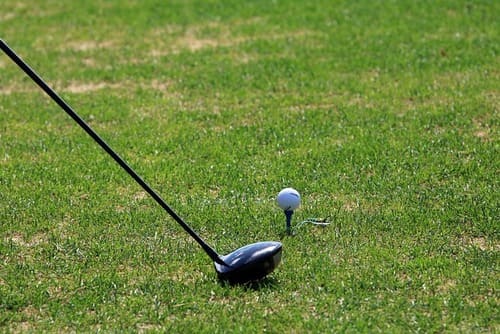
Factors That Influence the Distance and Accuracy of Golf Shots
One of the most crucial factors that influence the distance and accuracy of golf shots is the swing speed of the golfer. A faster swing speed typically generates more power, resulting in increased distance.
On the other hand, a slow swing speed may result in lower distance and reduced accuracy. To maximize distance and accuracy, golfers need to focus on improving their swing speed through proper technique and strength training exercises.
Another important factor to consider is the launch angle of the golf ball. The launch angle refers to the angle at which the ball takes off after impact. It affects both distance and accuracy. A higher launch angle tends to result in increased carry distance, while a lower launch angle can increase roll distance.
Additionally, the launch angle also determines the trajectory of the shot, with a higher angle usually producing a higher, more arcing flight path. Golfers can control the launch angle by adjusting their clubface angle at impact and the loft of the club they use.
The Science Behind Low Spin Golf Balls
Low spin golf balls are designed with scientific precision to reduce the amount of spin they generate when hit. This is achieved through the use of advanced dimple patterns, multilayer construction, and special cover materials. The dimple pattern on a low spin golf ball is crucial as it helps minimize aerodynamic lift, keeping the ball flying on a more penetrating trajectory.
Additionally, the multilayer construction allows for a lower compression core, which further reduces spin off the tee.
Furthermore, the cover materials used in low spin golf balls are engineered to provide a lower coefficient of friction with the clubface. This reduces the amount of spin generated at impact, resulting in a more controlled and straighter shot.
The science behind low spin golf balls is truly fascinating, as manufacturers employ cutting-edge technologies and conduct extensive research and testing to ensure optimal performance.
By understanding the intricacies of aerodynamics, compression, and cover materials, golf ball engineers can manipulate these variables to create a ball that maximizes distance while minimizing spin.
Comparing Low Spin Golf Balls to High Spin Golf Balls
When it comes to choosing the right golf ball for your game, one important factor to consider is the spin. Low spin and high spin golf balls differ in the amount of spin they generate, which can have a significant impact on your shots.
Low spin golf balls typically produce less backspin and sidespin compared to high spin golf balls. This can result in a more penetrating ball flight and reduced curvature, making them ideal for players who are seeking distance and accuracy off the tee. Low spin golf balls can lead to further and straighter shots, especially off the tee.
However, it’s important to note that there are trade-offs when it comes to low spin golf balls. While they may offer increased distance, they can be more challenging to control around the greens. High spin golf balls, on the other hand, tend to generate more spin, providing better stopping power on approach shots and increased control around the greens.
This can be advantageous for players who prioritize precision and short game performance. It ultimately comes down to personal preference and playing style as to whether low spin or high spin golf balls are the better fit for your game.
The Pros and Cons of Using Low Spin Golf Balls
There are several advantages to using low spin golf balls. One of the main benefits is increased distance. Low spin balls typically have less sidespin, which helps to reduce the amount of curvature on a shot. This can result in longer drives and more distance off the tee.
Additionally, low spin golf balls can also provide more control and accuracy producing shots that are further and straighter. With less spin off the clubface, the ball is less likely to veer off course, making it easier to hit straighter shots and navigate tricky fairways.
On the flip side, there are also some drawbacks to using low spin golf balls. One of the main disadvantages is decreased spin around the greens. Low spin balls tend to have less spin and bite on approach shots, making it more difficult to control the ball on the greens. This can lead to challenges when it comes to stopping the ball close to the pin, especially on tight and fast greens.
Additionally, low spin golf balls can be more susceptible to wind. With less spin to counteract the effects of wind, shots can be easily influenced and may not fly as expected.
Tips for Choosing the Right Golf Ball for Your Game
When it comes to choosing the right golf ball for your game, there are a few key factors to consider. Firstly, consider your skill level and swing speed. If you have a slower swing speed, opting for a low compression golf ball can help maximize distance.
On the other hand, if you have a faster swing speed, a high compression ball may provide better control and accuracy.
Another important consideration is the type of golf course you frequently play on. Different golf balls are designed for different course conditions. There are balls specifically tailored for soft, lush fairways, while others are built to withstand firm, fast conditions.
It’s essential to choose a ball that suits the specific course conditions you encounter regularly. By selecting the right golf ball based on your skill level and course conditions, you can enhance your performance and enjoy a more satisfying game on the greens.
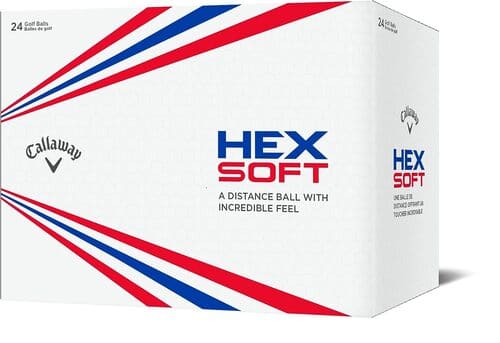
The Callaway Hex Soft golf balls are our favorite low spin golf balls on the market today.
Improving Distance and Accuracy with Low Spin Golf Balls
One of the key reasons why golfers opt for low spin golf balls is to improve their distance and accuracy on the course. These specialized balls are designed to reduce the amount of spin generated upon impact with the clubface, resulting in a more controlled trajectory.
By minimizing spin, golfers can achieve longer distances with their shots, making it easier to reach the green in fewer strokes.
Additionally, the reduced spin can help golfers maintain a straighter shot, as excessive spin can cause the ball to curve off the intended line. By using low spin golf balls, players can enhance their overall performance and increase their chances of a successful shot.
Choosing the right low spin golf ball for your game is crucial when it comes to improving distance and accuracy. Different golfers have varying swing speeds and playing styles, which can affect how the ball interacts with the clubface.
It is essential to consider factors such as compression, cover material, and dimple design when selecting a low spin ball. Opting for a ball with a lower compression can help golfers with slower swing speeds generate more distance, while those with faster swing speeds might benefit from a higher compression ball.
The cover material and dimple design also play a role in the ball’s aerodynamics and overall performance. By carefully assessing these factors and experimenting with different low spin golf balls, golfers can fine-tune their game and maximize both distance and accuracy.
Common Misconceptions About Low Spin Golf Balls
When it comes to low spin golf balls, there are often misconceptions that can mislead golfers. One common misconception is that low spin golf balls will automatically increase distance. While it is true that reducing spin can lead to longer shots, the distance is also affected by factors such as swing speed, launch angle, and the player’s ability to compress the ball correctly. Simply switching to a low spin golf ball does not guarantee increased distance.
Another misconception is that low spin golf balls are only suitable for professionals or advanced golfers. In reality, golfers of all skill levels can benefit from using low spin golf balls. These balls can help reduce the sidespin on shots, making them more forgiving and helping to keep the ball on target.
However, it’s important to note that low spin golf balls may not be the best option for golfers who struggle with generating enough spin to get the ball to stop on the green. It’s essential to consider personal playing characteristics and preferences when choosing a golf ball.
FAQs
What are low spin golf balls?
Low spin golf balls are designed to minimize the amount of backspin generated when the ball is struck. They are specifically made for golfers who want to reduce the amount of spin on their shots.
How do low spin golf balls affect distance?
Low spin golf balls generally tend to reduce the amount of distance on shots. This is because backspin helps lift the ball into the air and creates more carry. With less backspin, the ball may not have as much lift and may travel a shorter distance.
What is the relationship between low spin golf balls and straight shots?
Low spin golf balls can help promote straighter shots. With less spin, there is less chance for the ball to curve in the air. However, it is important to note that a golfer’s swing and technique also play a significant role in shot accuracy.
What factors influence the distance and accuracy of golf shots?
Several factors can impact the distance and accuracy of golf shots, including the golfer’s swing speed, launch angle, clubface angle at impact, and ball compression. These factors, combined with the characteristics of the golf ball, determine the overall performance.
What is the science behind low spin golf balls?
Low spin golf balls are engineered with a lower dimple count and a softer cover to reduce spin. The combination of these design features helps minimize backspin and create a flatter trajectory for the ball. This helps low spin golf balls go further and straighter.
How do low spin golf balls compare to high spin golf balls?
Low spin golf balls have less backspin compared to high spin golf balls. High spin golf balls generate more spin, providing better control and stopping power on the green. Low spin balls are generally preferred by golfers looking for more distance off the tee.
Can low spin golf balls help improve distance and accuracy?
Yes, low spin golf balls can help improve distance by reducing backspin and promoting a flatter trajectory. They can also contribute to accuracy by minimizing the chance of the ball curving in the air, although the golfer’s swing technique is still crucial. Low spin golf balls DO lead to shots going further and straighter.
What are some common misconceptions about low spin golf balls?
Common misconceptions about low spin golf balls include the idea that they are only suitable for low-handicap players. Or that they are only beneficial for long drives, or that they automatically guarantee straight shots. These misconceptions can lead to misunderstandings about the performance and suitability of low spin golf balls.
